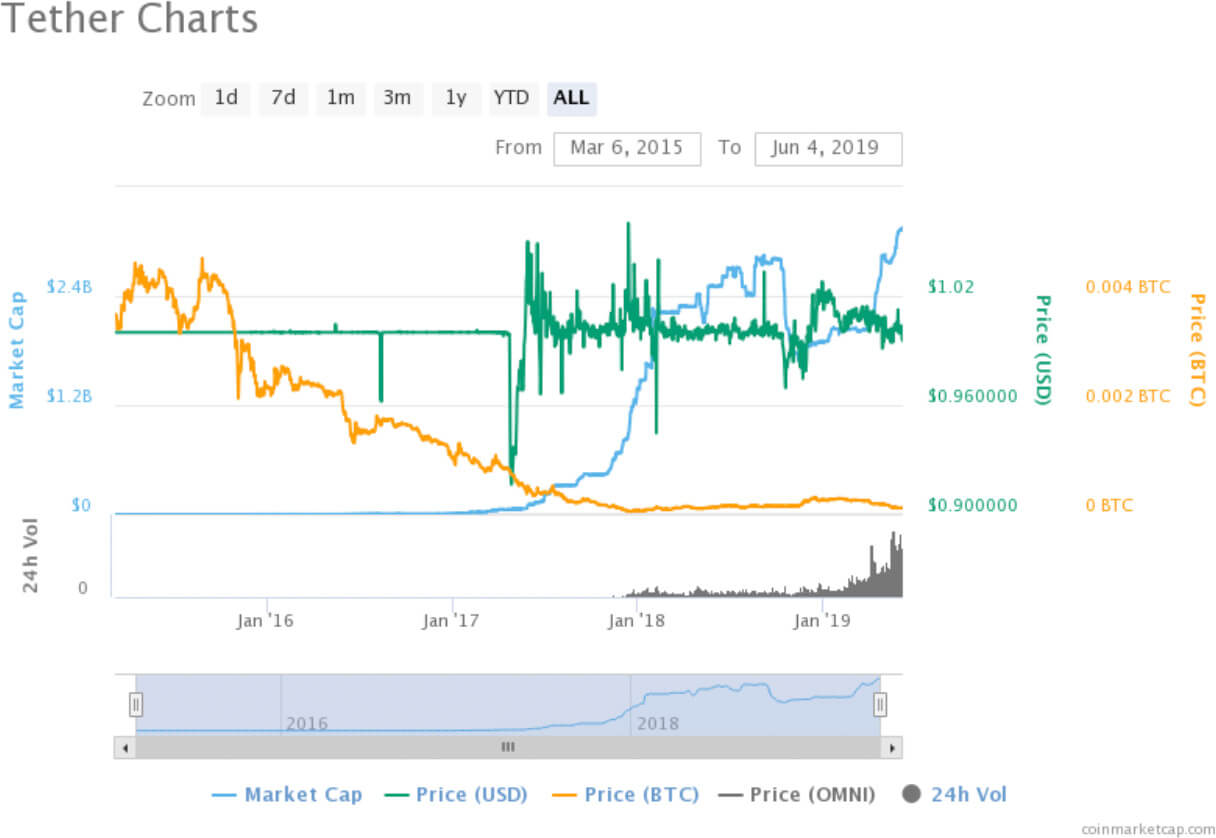MakerDAO token holders voted to decrease the stability fee on the Dai stablecoin by 2 percent to 17.5 percent. Executed on May 28, this will be the first time the fee has been lowered in over five months.
The MakerDAO platform offers collateralized loans in the Dai stablecoin to users who deposit ether into its smart contracts. Dai acts as a decentralized on-ramp for dollar-backed stablecoins, in contrast with stablecoins backed by deposits of U.S. dollars.
Finding a balance for Dai
Dai has consistently traded below its peg since January. While the stability fee makes economic sense, the recent debacle with Tether demonstrates that the expectations of the market can behave in interesting ways. Despite the revelation of USDT not being fully-backed as promised, it only fell to around $0.92.
At only 74 percent backed, it is possible to infer that the expectation of the peg outweighed the expectation of Tether to be backed by the dollar. For MakerDAO, this raises questions about the influence of the stability fee versus the expectation of a peg.


Adding a new variable to the experiment, voters can now signal their preference within a range of 12.5 to 21.5 percent. Voters can choose to lower the stability fee to gain cheaper CDPs at the risk of Dai’s peg floating but if expectation holds more influence than the fee then it may be a good bet. In any case, MakerDAO plans to move from a single-collateral to a multi-collateralized system that will help eliminate the stability fee at some point in the future.
Anatomy of Ethereum collateralized loans
The MakerDAO platform consists of three parts: the MakerDAO token, the Dai stablecoin, and collateralized debt positions (CDPs). The MakerDAO token enables holders to contribute to platform governance by voting on proposals to increase and decrease the stability fee. Dai is a cryptocurrency that aims to maintain a one-to-one peg with the U.S. dollar; CDPs are the smart contacts that enable users to deposit ether and create Dai.
For traders, CDPs offer a way to leverage their exposure to Ethereum up to 150 percent. In other words, the amount of Dai generated with a CDP can’t exceed 150 percent of the value of the ether deposited or the contract can be liquidated. If the market suddenly drops and the price of ether crashes, the user loses their ability to mint Dai and will be hit with a 13 percent liquidation penalty to claim their collateral. Many traders use Dai to purchase more ether to lock in CDPs, effectively enabling even higher exposure to cryptocurrency.
Purpose of the stability fee
The stability fee acts as a counterweight to balance fluctuations in the supply and demand of Dai and maintain its peg to the U.S. dollar. When a user creates a CDP, they agree to pay the stability fee in order to withdraw their ether. At 17.5 percent, that can take a heavy toll.
If users create too much Dai, however, then the price of Dai should fall below its peg with the dollar (and vice versa). Raising and lowering the stability fee helps control the amount of Dai being created and helps prevent wild fluctuations in the supply—and price—of Dai.
In the meantime, Dai has become an important part of other decentralized financial products, including fiat on and off ramps in places with unstable currencies, a debit card, exchanges, and charitable projects like Social Alpha Foundation and Giveth. MakerDAO CDPs currently hold 1.64 million ether—roughly 1.5 percent of the total supply at the time of writing—making Dai the most popular service in decentralized finance (DeFi).
Maker, currently ranked #21 by market cap, is up 4.85% over the past 24 hours. MKR has a market cap of $692.26M with a 24 hour volume of $4.52M.
Chart by CryptoCompare
Maker is up 4.85% over the past 24 hours.
Dai, currently ranked #81 by market cap, is up 0.99% over the past 24 hours. DAI has a market cap of $82.79M with a 24 hour volume of $58.84M.
Chart by CryptoCompare
Dai is up 0.99% over the past 24 hours.
Filed Under: DeFi, Price Watch, Stablecoins
Disclaimer: Our writers’ opinions are solely their own and do not reflect the opinion of CryptoSlate. None of the information you read on CryptoSlate should be taken as investment advice, nor does CryptoSlate endorse any project that may be mentioned or linked to in this article. Buying and trading cryptocurrencies should be considered a high-risk activity. Please do your own due diligence before taking any action related to content within this article. Finally, CryptoSlate takes no responsibility should you lose money trading cryptocurrencies.
The post appeared first on CryptoSlate






